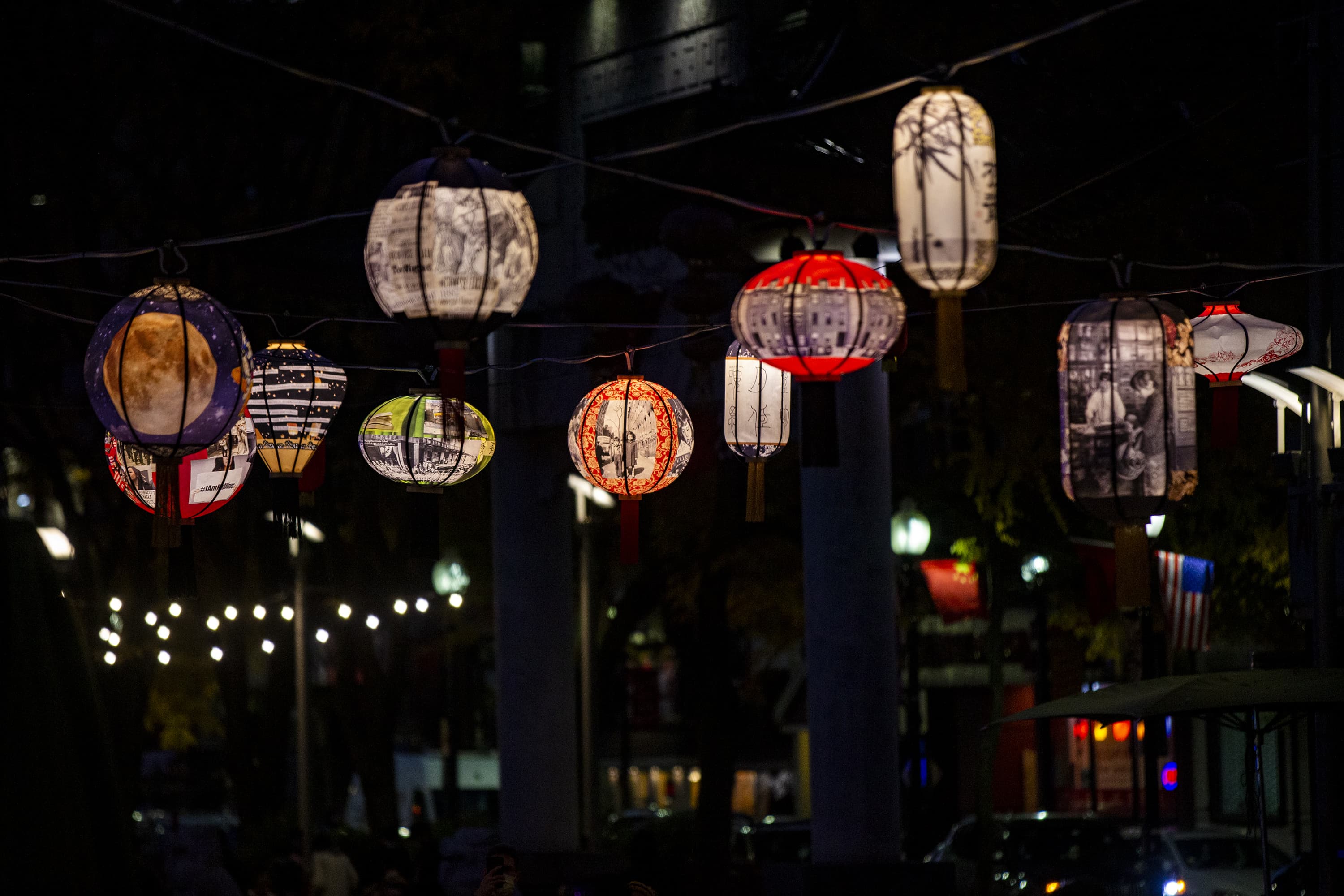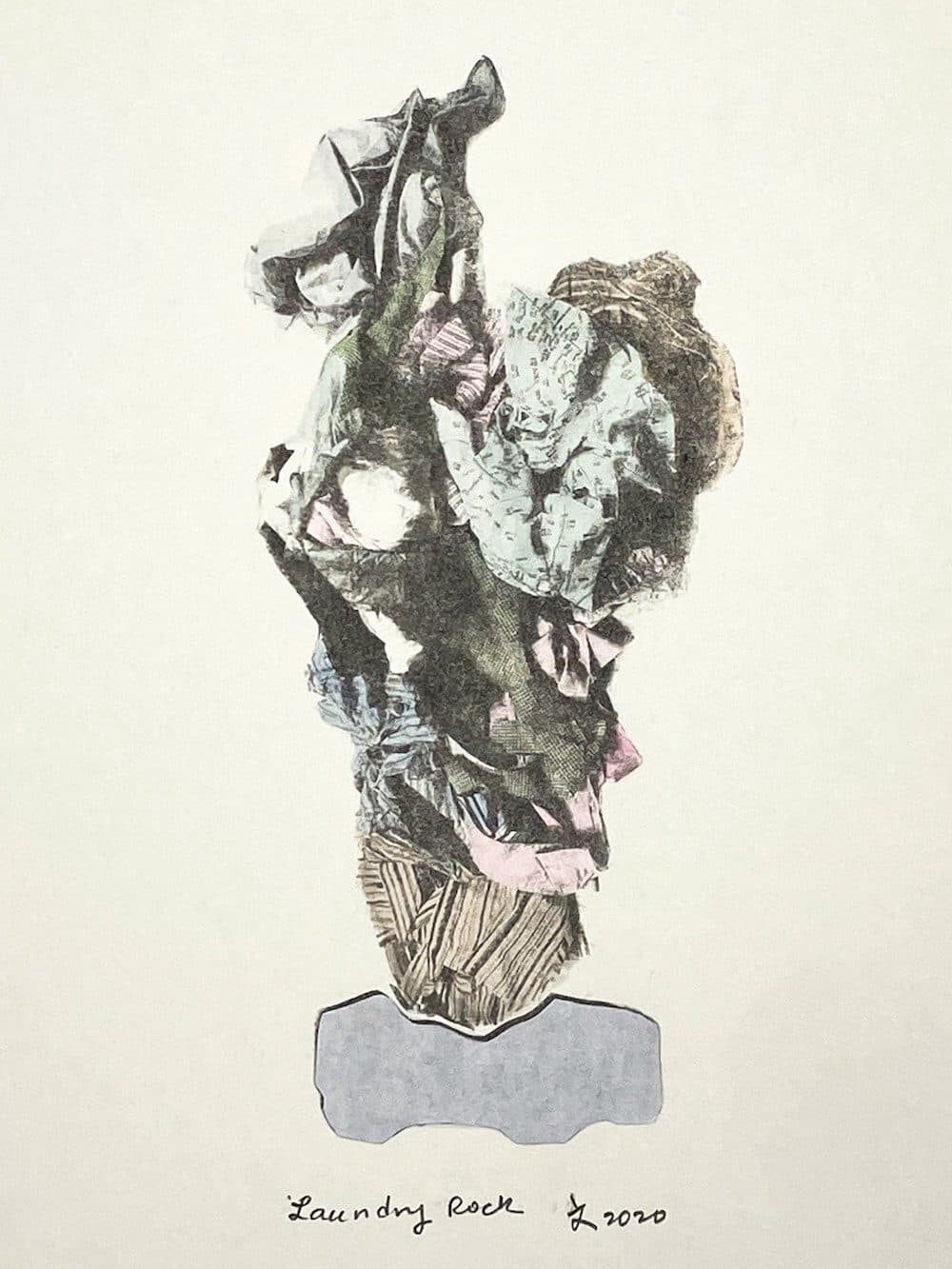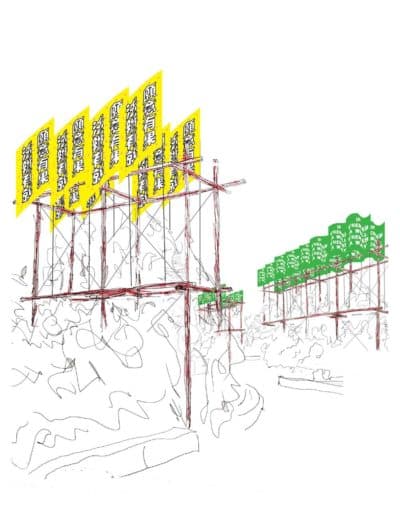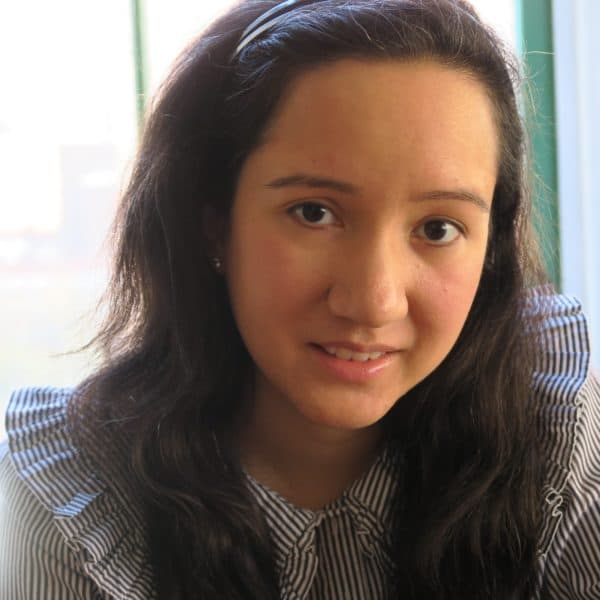Advertisement
Chinatown Artists Embrace Their Identities To Chart The Neighborhood's Future

Ever since the pandemic hit early this year, Chinatown artists have persisted in keeping their craft alive. Organizations like the Pao Arts Center on Albany Street pivoted programming and found new avenues for inspiration. Director Cynthia Woo said they embraced virtual exhibits and more public art.
“Our pivot this year has really been thinking about modes of connection, and with that, the delivery mode of how we’re executing our program,” said Woo. Her organization has tried to amplify the concerns of the community through arts and creative events. “This period is a time where there’s no rules. There’s no playbook. It’s a time of experimentation,” she said.
Artist Lily Xie has been illuminating the memories of the Chinatown community with her project “Chinatown Story Cart.” As part of her project, together with the Asian Community Development Center, youth created a mural, which features personal writing and drawings, and a timeline that documents the neighborhood’s past.
Xie also helped to organize youth storytelling workshops, where young people interviewed friends and family about how they were weathering the pandemic. Since Chinatown has struggled particularly this year, Xie said it was important to activate the power of art as a way of sharing narratives.
"This period is a time where there’s no rules. There’s no playbook. It’s a time of experimentation."
Cynthia Woo
“Chinatown has been so hard hit. For “Story Cart” we tried to think about art as a way to build capacity,” said Xie. “During COVID, it’s also been a bad period of anti-Asian racism,” she explained, so teaching storytelling and artmaking skills are tools for advocacy. Xie said that artists in Chinatown do more than helping people to remember their pasts; they have a part in creating a vision of what is to come. During the precariousness of the pandemic, artists have continued to fulfill that role.
“I would even say that it goes beyond preserving cultural identity, as well as exploring the contradictions, intricacies, and depths of identity,” said Xie. “Art is a tool for us to think about the future. It’s a tool for us to have imagination and to dream about what a more just future of Chinatown looks like.”
Artist Yu-Wen Wu, whose public art installation “Lantern Stories” was exhibited this fall through the Greenway Conservancy, said that over the course of the pandemic, she heard about many instances of anti-Asian racism she wanted to address through her piece. In designing the lanterns that she hung, she wove in the difficult histories of discrimination and inequity. Jeena Hah, director of community programs and design at the Asian Community Development Corporation, said that gentrification is an ongoing issue in Chinatown. Art can address the cultural erosion that takes place during this process, combatting the persistence of social amnesia.
“Historically, Chinatown as a community has been told, ‘You don’t belong.’ That was through violence, through racist policies, and most recently through gentrification and displacement,” said Hah. “Working class immigrant families were told they don’t belong. Our work through the art is to push back on that narrative and say, ‘Not only do we belong, but we actually deserve spaces where there is joy and healing.’ It’s not just a fight for equity, but we deserve to thrive as a neighborhood.”

The Pao Arts Center has more projects launching in the new year. Beginning in January, artist-in-residence Wen-hao Tien’s exhibit “Home on Our Backs” will be displayed virtually and in person. This interdisciplinary work is based on Tien’s “Unveiling Boston Chinatown” project and will explore the ideas of migration, displacement, and nomadism.

Then in February, Auntie Kay and Uncle Frank Chin Park will be transformed with artist Andy Li’s installation “The Herd,” celebrating the Year of the Ox. Since 2015, a new temporary Chinese zodiac-inspired art piece has been installed in the park by the Rose Kennedy Greenway Conservancy. Li’s fabric signs, in the lucky colors yellow and green, will feature text in English and Chinese that reflects the personality of the ox. The public artwork is meant to suggest that after coming out of a difficult year, with hard work and determination, people can triumph over the challenges.
Li said he researched the ox’s characteristics for his work. “The ox is work-driven and likes to be known for the fruits of its labor. They’re persistent. I wanted to take that idea and make it a motivational environment. In mythology, the ox was sent from the heavens down to help humans to get through famine, to get through a challenging time and to work together.” He describes his work as text-based, and kept returning to the notion, “if there’s a will, there’s a way.’”
